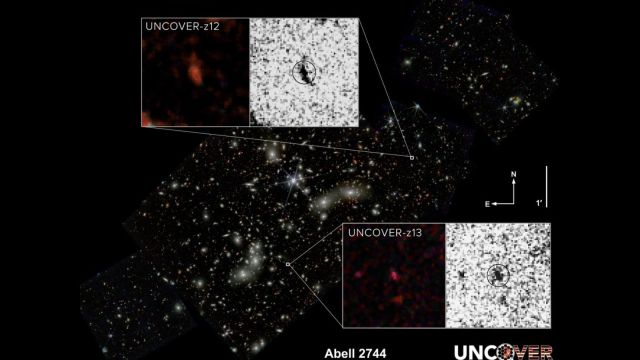James Webb Space Telescope help find 2 of the most distant galaxies
Scientists used the James Webb Space Telescope to find the second and fourth most distant galaxy ever discovered in history. They are around 33 billion light-years away.
 UNCOVER z-13 and UNCOVER z-12 are the second and third-most distant galaxies ever discovered. (NASA, Wang et al.)
UNCOVER z-13 and UNCOVER z-12 are the second and third-most distant galaxies ever discovered. (NASA, Wang et al.) Scientists used the James Webb Space Telescope to discover the second and fourth-most distant galaxies in a part of space known as Pandora’s cluster.
At nearly 33 billion light-years away these unbelievably distant galaxies help us learn about how the earliest galaxies may have formed. Usually, galaxies at this distance appear in images as red dots, these new galaxies appear larger and look like a “peanut and a fluffy ball” according to researchers who authored a paper published in the journal Astrophysical Journal Letters.
Since they are around 33 billion light-years away, we are seeing them as they were a long time ago. The researchers estimate that the light detected by Webb telescope was emitted by the galaxies about 13.4 billion light-years ago, according to the Pennsylvania State University. At that time, the universe was about 330 million years old. The galaxies are currently 33 billion light-years away from us because of the expansion of the universe over time.
The James Webb Space Telescope took deep field images of Pandora’s cluster in 2022. There were more than 60,000 sources of light in the images. That region was selected because it was located behind many galaxies that can create an effect called gravitational lensing. Essentially, the gravitational pull of a foreground galaxy bends the space around, warping light coming from behind and acting as a kind of magnifying glass.
The researchers also used computational models to reveal the properties of these early galaxies. As expected, the two young galaxies were young had few metals in their composition and were growing rapidly and actively forming stars.







